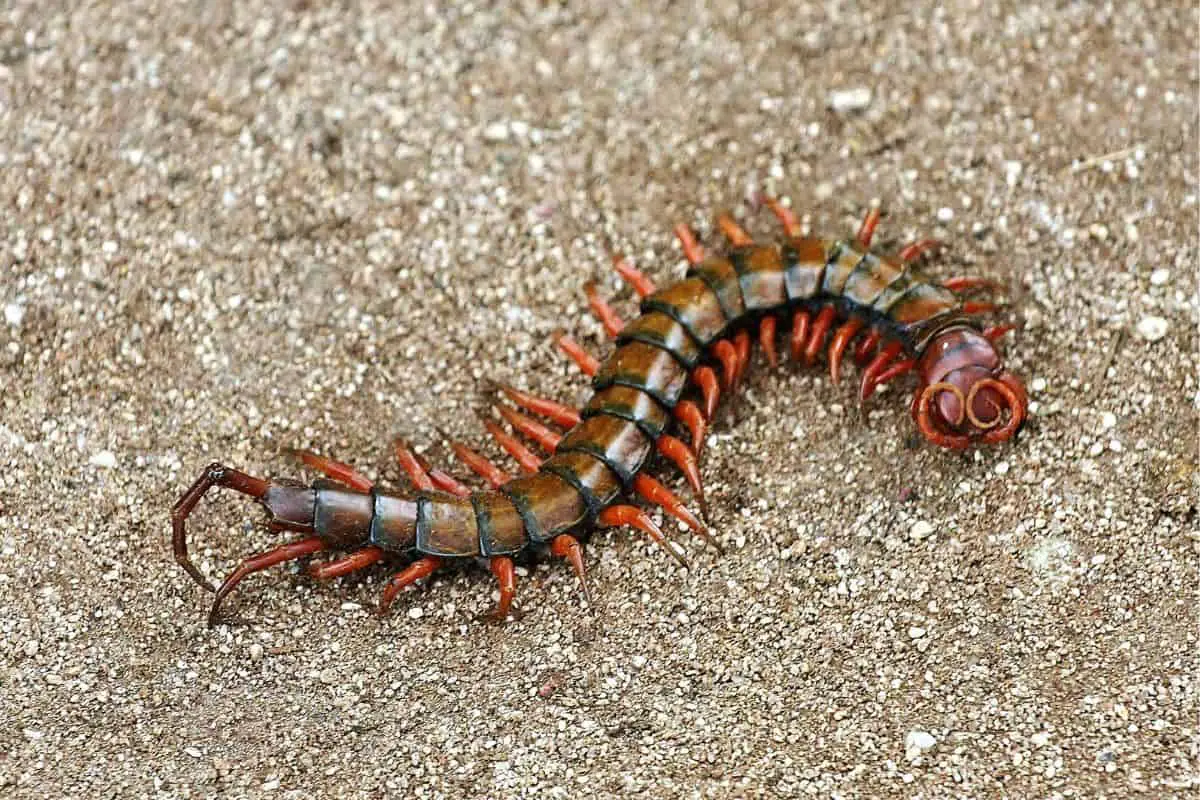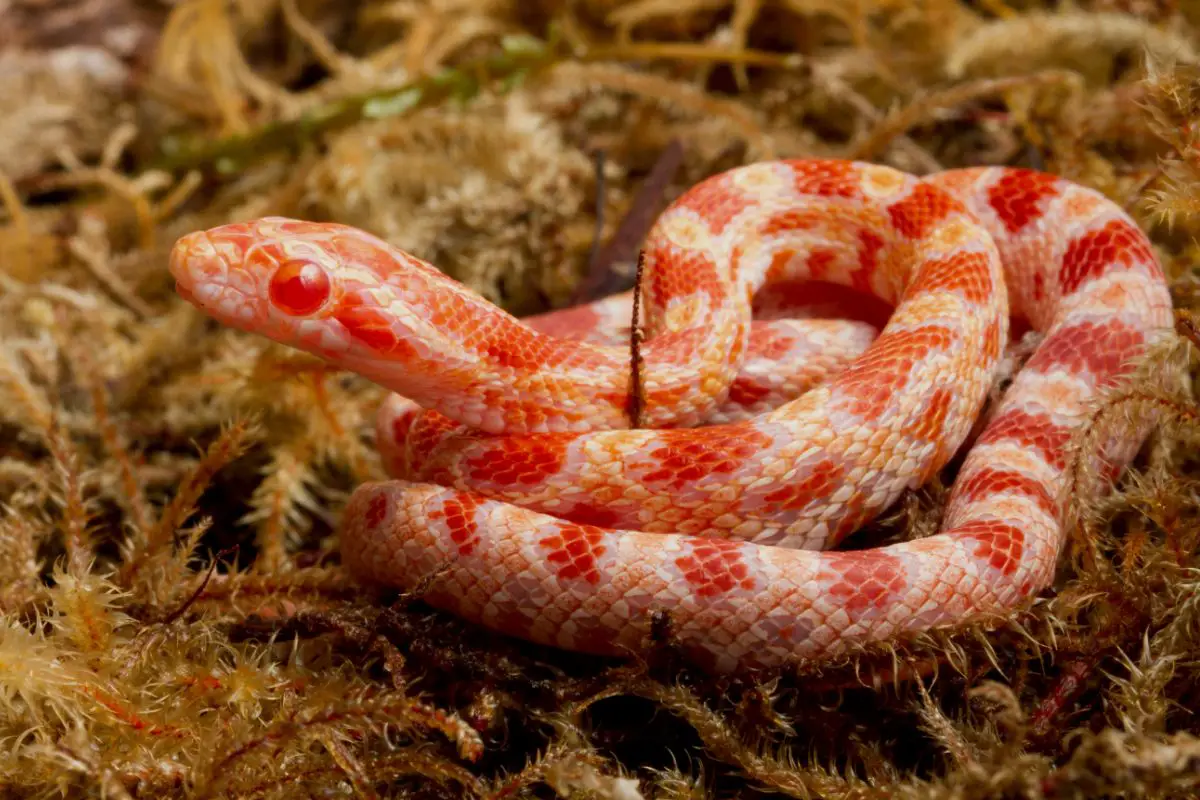Hawaiian islands are filled with tropical habitats that provide humidity and moist hiding places that centipedes love. Hawaii has around 25 species of centipedes from three different genera: Scolopendra, Lethobius, and Mecistocephalus. There are 3 main species that are most common and can be found in or around homes. Luckily, only one of them has venom that is strong enough to be life-threatening to humans.
Read on to learn more about 4 centipedes in Hawaii, including pictures, and tips on preventing them from entering your home.
4 centipedes in Hawaii
Although there are 25 different species of centipedes in Hawaii, the following 4 are the most common ones you will encounter. Find out how to identify them and which one is the most venomous!
1. Hawaiian centipede
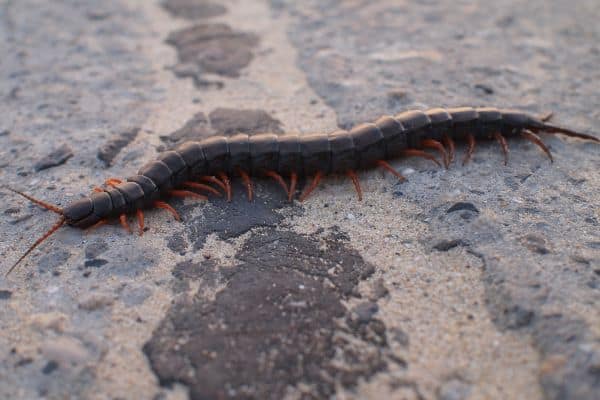
Scientific name: Scolopendra subspinipes
The Hawaiian centipede is also known as the Pacific Giant Centipede, Vietnamese centipede, and jungle centipede. It’s the largest centipede in Hawaii, growing 4 to 10 inches long but sometimes up to a foot and they have 22 body sections with 2 legs on each section. These reddish-brown centipedes prefer the tropical and sub-tropical habitats of Hawaii.
They are known for their venomous bite that causes severe reactions, including local pain with skin redness or irritation. Although death is rare, a few cases have been reported, especially with allergic reactions or after multiple bites.
2. Red-headed centipede
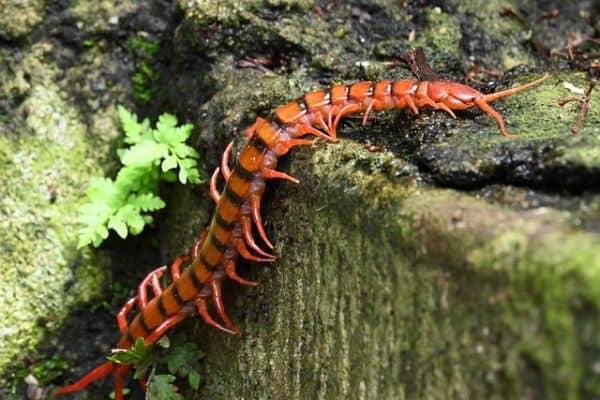
Scientific name: Scolopendra morsitans
Also called the Tanzanian blue ringleg, the red-headed centipede have 17 body segments and grows around 5.5 inches long. They get their name from the bright red heads contrasting against their typical brown and black-striped bodies. Juveniles will lack clear body stripes.
Although these centipedes have venom strong enough to kill small prey such as spiders, insects, and small vertebrates like mice, their bite isn’t harmful to humans.
3. Lethobius subspinipes
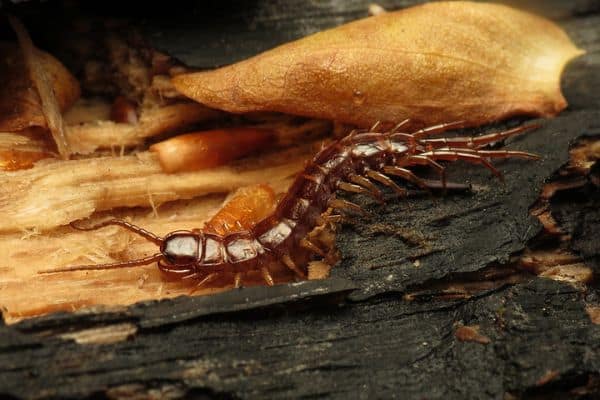
Lethobius subspinipes are sometimes referred to as stone centipedes however, that is a common name for the various species in the Lithobius genus. These small dark brown and black centipedes are between 0.8 to 2 inches long with 30 legs.
They prefer hanging out underneath rocks, wet logs, and piles of leaves. However, they are also common in gardens and around homes. Since they are so small, they are harmless to humans.
4. Mecistocephalus maxillaris
Mecistocephalus maxillaris is a small centipede species that are harmless to humans and don’t have a common name. They have a bright yellow body with a dark red head and lack the comb-like appearance of most centipede species. These centipedes are native to India and Sri Lanka and most likely made their way to Hawaii in shipping containers.
How to get rid of centipedes in your Hawaiian home: 8 tips
Even the species that aren’t harmful to humans can look scary if you find one in your bathroom. Here are tips on how to remove centipedes and prevent them from reproducing in your backyard or home.
1. Wear protective gloves
If you are removing centipedes by hand, always use protective gloves since they can’t bite through. However, it’s best not to remove the Hawaiian centipede by hand and use a broom or stick instead to avoid touching them directly. Tie the centipede in a plastic bag before throwing them in the trash.
2. Try a vacuum cleaner
You can use a vacuum cleaner to remove centipedes quickly. This method is also easier if you see more than one centipede in your home. Make sure you remove and trash the vacuum cleaner bag immediately since they can survive for a while inside the vacuum cleaner.
3. Place sticky traps
Sticky traps are one of the best ways to catch centipedes in your home. Place them in high humidity or shaded areas, such as basements, laundry rooms, and basements. Since Hawaii has humid weather year-round, you can keep these traps out throughout the year.
4. Seal home openings
Centipedes crawl easiest on ground level but are also known to crawl through first-floor windows. To avoid these pests entering your house, seal the bottom parts of doors, window cracks, and any cracks in the house walls. So take a walk around your house to inspect for crevices and cracks and seal them with caulk.
5. Regularly clean your yard

Centipedes like shaded and moist areas such as piles of leaves and rotting wood. They typically hide or mate in piles of leaves and are attracted to the moist fibers of rotting wood that retain rainwater.
Regularly monitor and clean the outdoor space to remove these ideal mini-habitats to reduce the chances of centipedes breeding nearby and entering your home.
6. Put barriers around mulch
Besides leaves and rotting wood, centipedes also like high humidity soil, such as mulch. Add a net or physical barrier between the soil and mulch to prevent them from entering your garden to hide in the mulch. This method will make it harder for centipedes to move freely around your garden.
7. Dehumidify your home
Hawaiian homes typically have high indoor humidity that attracts centipedes. Make your home less attractive by using a dehumidifier inside and frequently opening windows to reduce humidity from cooking. Reducing the clutter around your home will also make a dehumidifier more efficient since clutter can trap moisture.
8. Get rid of other home pests
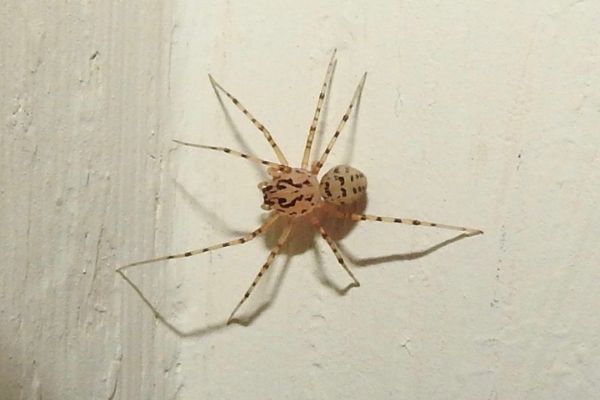
Centipedes eat insects around the house, such as spiders, cockroaches, and small mice. By reducing the number of insects in your home, you’ll also reduce the chance of centipedes taking up shelter indoors. You can apply various insecticides to get rid of these other pests.
Featured image by Adrian Scottow via Flickr | CC BY-SA 2.0
